Does Dry Cleaning Kill Bed Bugs: The Efficacy Of Fabric Treatment Methods
Dealing with a bed bug infestation can be a daunting experience, as these resilient insects are notorious for their ability to spread rapidly. When considering methods to eliminate bed bugs, one common question arises regarding the effectiveness of dry cleaning in exterminating these unwanted critters. The answer is affirmative – dry cleaning has been shown to eradicate bed bugs from clothing and fabrics due to its high-heat and chemical solvent-based process.
While dry cleaning is a valuable tool against bed bugs in clothing, it’s not a standalone solution for an entire infestation. A comprehensive approach is necessary, involving a combination of heat treatment, non-chemical strategies, and in some cases, professional pest control services. It’s also crucial to consider the appropriate treatment for different items, as some fabrics may be damaged by the heat or chemicals used in dry cleaning.
In some instances, safely disposing of severely infested items is necessary to prevent further spread.
Key Takeaways
To eliminate bed bugs from clothing, dry cleaning proves to be a reliable method that leverages the power of heat and chemical agents. A multi-pronged strategy is crucial for achieving a bed bug-free outcome. For items affected by an infestation, it’s advisable to seek guidance from professionals and consider comprehensive treatments tailored to your home’s unique needs.
Understanding Bed Bugs
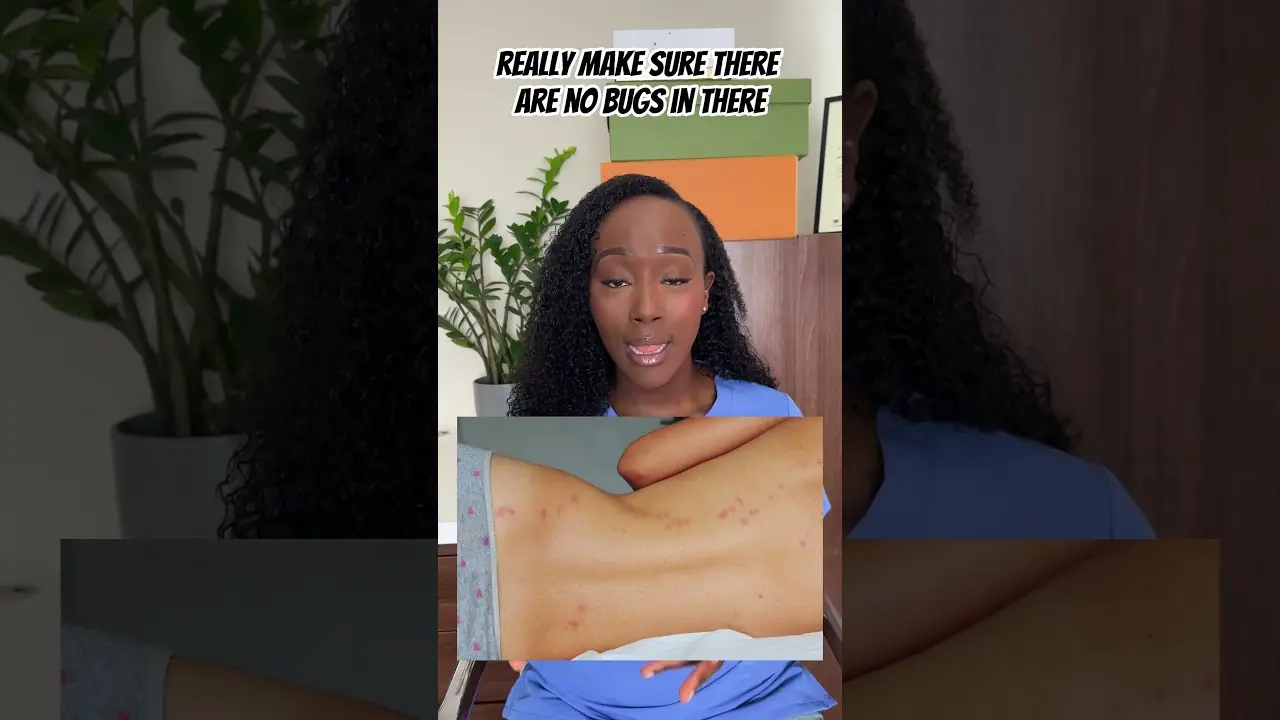
Bed bugs are notorious for their ability to hide in seemingly impossible locations. While they often target bedding and furniture, it’s crucial to understand that these pests can infest a wide range of areas, including sheets, mattresses, box springs, headboards, and even the smallest crevices between walls and floors. Their tiny size allows them to slip into the tiniest cracks, making detection and removal all the more challenging.
Life Cycle and Behavior
Bed bugs have a distinct life cycle that involves multiple stages of development. The journey begins with the laying of tiny eggs, which are roughly the size of a speck of dust. As these eggs hatch, they progress through five nymphal stages, each requiring at least one blood meal to fully mature. Once they reach adulthood, bed bugs can live for approximately 2-4 months.
A concise overview of their life cycle is as follows: the initial egg stage is characterized by a milky white hue and length of about 1mm, followed by five molting and growth stages that culminate in the adult form, which is reddish-brown and up to 5mm long.
Notably, bed bugs exhibit nocturnal behavior, emerging at night to feed on human blood, whereas they spend most of their daytime hiding in various locations such as mattress seams, furniture joints, baseboards, wallpaper, and personal belongings. Their ability to survive for extended periods without feeding makes them persistent pests.
Identifying an Infestation
To identify a bed bug infestation, it’s crucial to be proactive and attentive. Here are key signs to watch out for:
Physical Bugs: Despite their small size, bed bugs can be seen with the naked eye and resemble apple seeds.
Bites: Typically found in clusters or lines, bed bug bites appear red, itchy, and can be quite discomforting.
Stains: Keep an eye out for tiny rust-colored spots on your bedding and mattresses – these are fecal marks left behind by bed bugs.
These subtle signs can indicate the presence of a larger infestation.
Eggs and Shells: Inspect the corners of your bedding and furniture for tiny, pale yellow eggshells or eggs themselves. These hidden clues reveal the extent of the infestation.
Remember, detecting bed bugs is not about spotting a single stray – you’re searching for an entire network.
Finding an infestation often means uncovering their intricate hiding spots in even the smallest crevices, from the edges of your bedding to the concealed recesses of your furniture. As such, remain vigilant and keep your eyes peeled!
Methods of Bed Bug Extermination
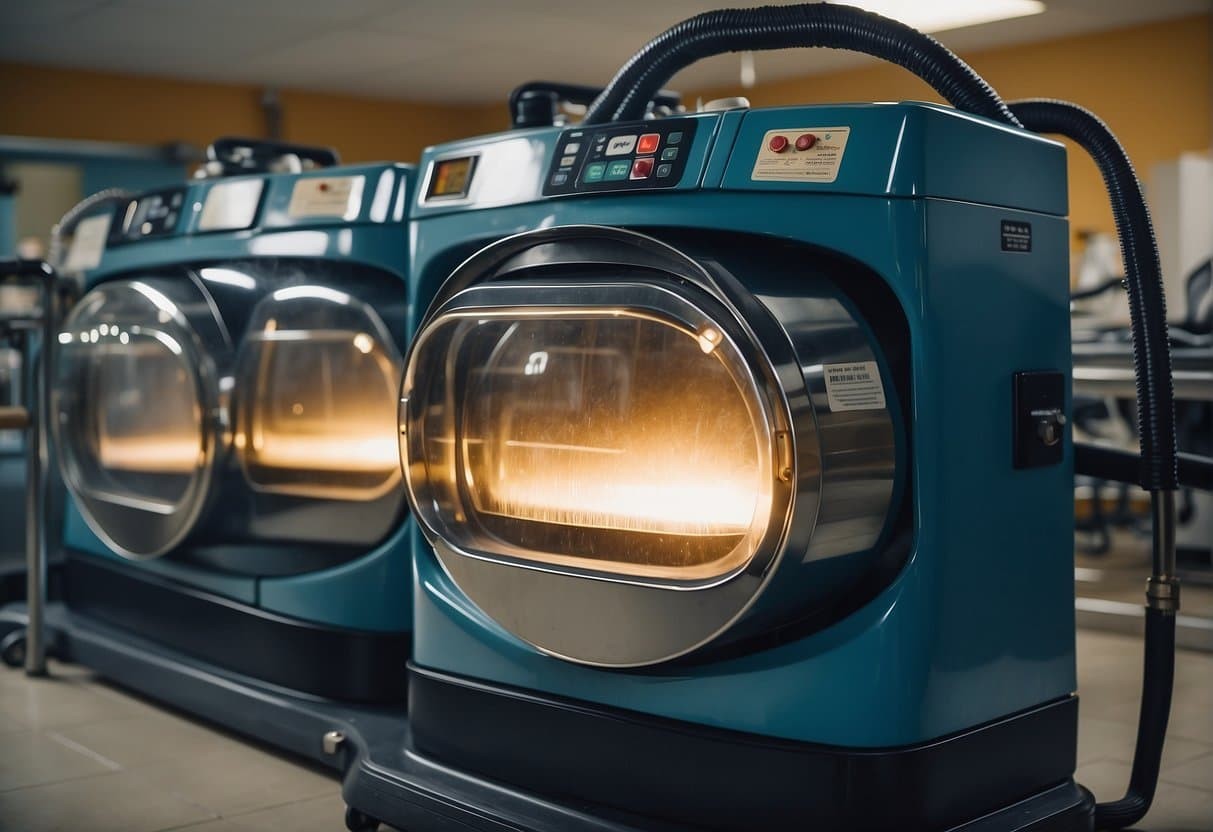
Embarking on a mission to banish bed bugs from your bedroom can be a multifaceted endeavor. The success rate of various methods differs, and certain strategies might be more effective depending on your specific situation. To help guide your efforts, let’s delve into the most popular approaches used to reclaim your bedroom sanctuary.
Chemical Treatments
When it comes to tackling bed bug infestations, chemical treatments are often employed by professional exterminators to target these unwanted pests. A range of pesticides may be used, including pyrethroids, neonicotinoids, and desiccants like diatomaceous earth, which works by dehydrating the bugs. To ensure both safety and effectiveness, proper application is vital. As a result, it’s often recommended that chemical treatments are handled by trained pest control professionals.
Heat Treatment
Bed bugs are susceptible to high temperatures, making heat treatment a highly effective method for eradication. Temperatures exceeding 118°F (48°C) sustained for at least 90 minutes can prove fatal to these pests. However, larger spaces may require specialized equipment to reach and maintain the necessary temperature to eliminate all life stages of bed bugs, ensuring a comprehensive solution.
Freezing Methods
Bed bugs can also be controlled through an unconventional method: freezing. This involves placing items, such as clothing or furniture, in a freezer set at 0°F (-18°C) for a minimum of four days. To achieve effective results, it is crucial that the cold temperature penetrates the infected materials thoroughly. This process may not be the most efficient or convenient option, but it can be a reliable and non-toxic way to eliminate bed bugs from infested areas.
Steam Cleaning
For delicate or temperature-sensitive items that cannot withstand high temperatures, steam cleaning offers a gentle yet effective solution. Steam cleaners harness the power of hot water vapor to deliver a concentrated blast of heat and moisture that can penetrate deep into fabric surfaces, killing bed bugs on contact. This eco-friendly and non-toxic method provides a safe alternative for those seeking a chemical-free approach to eliminating bed bugs.
Dry Cleaning and Bed Bugs
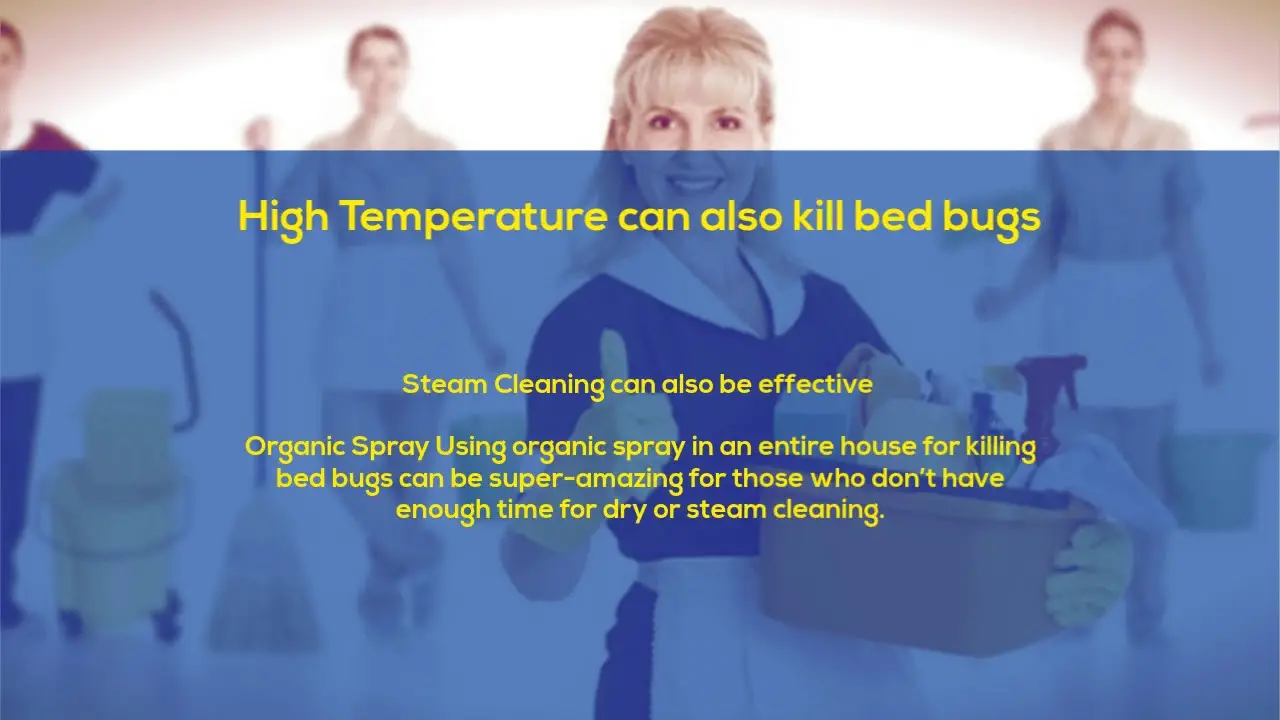
In addressing a bed bug infestation, integrating dry cleaning techniques into your approach is crucial. This process not only addresses your personal apparel, but also functions as a complementary method for eliminating these unwanted pests.
Effectiveness of Dry Cleaning
Professional endorsement for dry cleaning lies in its ability to eradicate bed bugs from infested clothing, thanks to potent chemical solvents like Perchloroethylene (PCE) and hydrocarbons. These insecticidal solvents are effective against bed bugs due to their inherent properties. Notably, PCE has been proven efficient in this regard, although it’s classified as a possible carcinogen and handled with care by dry cleaners to ensure safety.
The dry cleaning process combines these strong chemical solvents with heat, making it an effective method for exterminating bed bugs. In fact, the typical dry cleaning cycle can be lethal to bed bugs within 20-30 minutes at temperatures often reaching 140-145 °F.
Dry Cleaning Process
When entrusting your clothes to a professional dry cleaner, they will undergo a standardized process that leverages powerful solvents in machinery designed to clean without water. In recent years, innovative cleaners have started utilizing supercritical CO2 as an eco-friendly alternative, which not only excels at removing dirt and stains but also demonstrates promising results against bed bugs. This cutting-edge technology offers a new layer of protection for your wardrobe.
During the cleaning process, garments are placed in a controlled dryer environment where the carefully calibrated temperatures and solvents work harmoniously to ensure that no bed bug can survive. While it’s crucial to acknowledge that some bed bugs might potentially evade treatment if hiding in deep-seated areas of thick clothing or items, combining dry cleaning with other pest control strategies yields a robust approach to achieving a bed bug-free wardrobe.
Home Laundry Strategies

When it comes to eradicating bed bugs from your home, a crucial first step is tackling your laundry. By harnessing the power of both your washing machine’s mechanical action and your dryer’s heat, you can create an environment that makes it difficult for bed bugs to survive in your fabrics. This multi-faceted approach not only ensures a thorough cleaning but also helps to eliminate any lingering bed bug populations.
Washing and Drying Techniques
To effectively eradicate bed bugs from your bedding, start by implementing proper washing procedures. Begin by using the hottest water setting suitable for your fabric type, as high temperatures are lethal to these unwanted pests. When it comes to detergents, opt for a high-quality product that will help ensure a thorough cleaning.
Consider the specific fabric type you’re working with: delicate fabrics may require warmer water and milder detergents, while regular fabrics can handle hot water and standard detergents. In terms of drying, transfer your washed items to the dryer and set it to a high-heat cycle for at least 30 minutes. According to the EPA, temperatures ranging from 104 to 122 Fahrenheit for more than 30 minutes are sufficient to kill bed bugs.
Post-Treatment Considerations
Once you’ve completed the washing cycle, it’s crucial to prioritize post-wash care. This phase is just as vital in ensuring a successful eradication of bed bugs. Here’s how to proceed: First, inspect your clothes and dryer for any lingering signs of infestation. Next, store your freshly laundered items in sealed bags until you’re confident the problem has been fully controlled.
It’s essential to note that these strategies are most effective when applied to clothing and linens, whereas other infested items like mattresses require tailored treatment methods. With a solid understanding of these home-based laundry techniques, you’ll be well-prepared to take on the task of eliminating bed bugs from your clothing and linens using only the resources available in your own home.
Non-Chemical Treatments and Preventative Measures
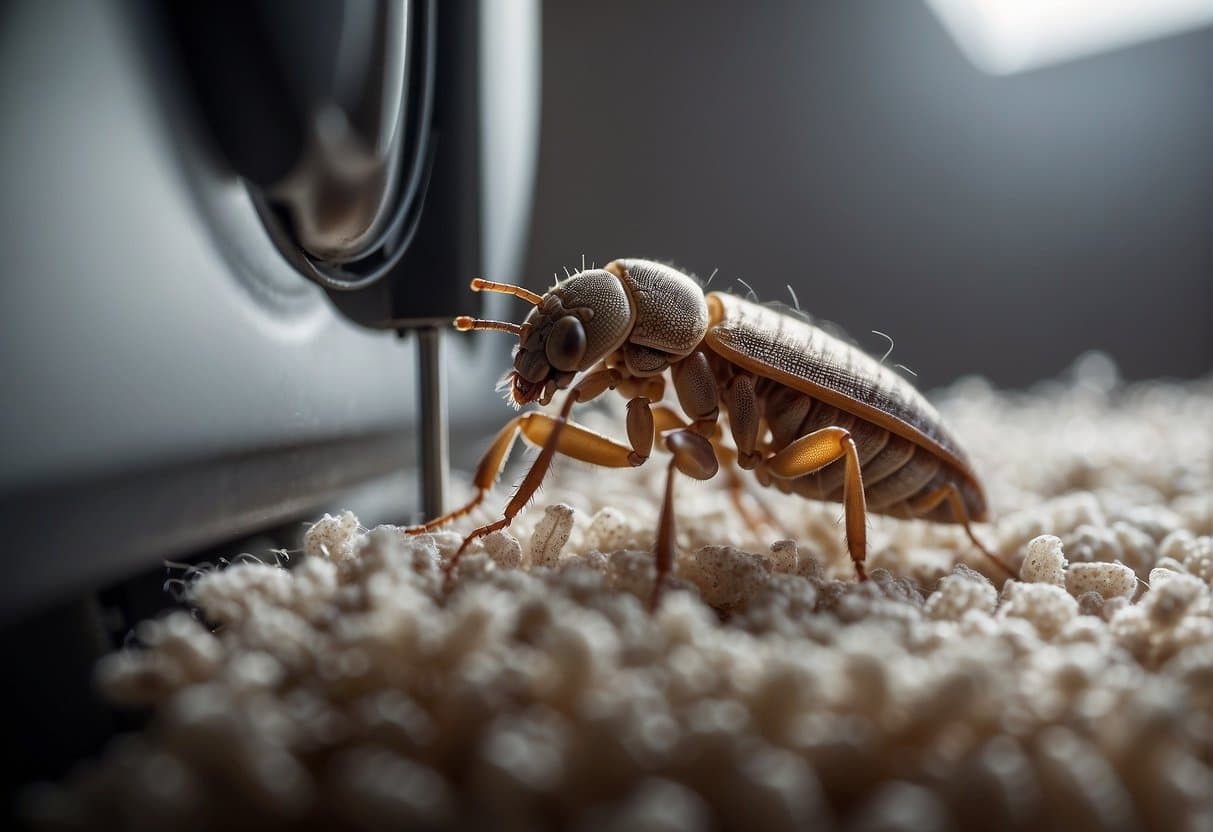
In managing a bed bug infestation, alternative approaches devoid of chemicals take center stage. These eco-friendly strategies not only mitigate environmental concerns but also contribute to the reduction of chemical resistance among bed bugs. As we delve into this topic, several efficient non-chemical methods will be discussed, providing readers with actionable steps in addressing bed bug outbreaks.
Vacuuming and Decluttering
When it comes to combating bed bugs, vacuuming is a crucial step that can physically remove them from your space. To ensure you’re not just spreading the problem or their eggs, equip your vacuum cleaner with a HEPA filter. Focus on areas where bed bugs tend to congregate, such as crevices in mattresses and sofas, edges of carpets, and around bed frames. Once you’ve finished vacuuming, immediately dispose of the vacuum bag in a sealed plastic bag to prevent escape or contamination.
Decluttering is also an essential preventative measure that reduces hiding spots for bed bugs. Remove any unnecessary cardboard boxes and rubbish from your bedroom, as these can provide ideal environments for bed bugs to hide and lay eggs. By taking these steps, you can significantly reduce the likelihood of a bed bug infestation.
Sealing and Storing
To safeguard against bed bugs, consider investing in a mattress encasement – a simple yet effective barrier that seals off hiding spots and makes it difficult for the pests to gain access. Similarly, when storing items like luggage or out-of-season clothing, opt for sealed plastic containers over bags, as they provide a more robust layer of protection. Upon returning from trips, keep your luggage isolated from bedrooms and living areas to prevent accidental bed bug introductions.
For added peace of mind, consider covering your luggage with protective covers or large plastic bags when not in use.
Natural Alternatives
While natural alternatives may not be as effective as chemical treatments in eliminating bed bugs immediately, they can still play a crucial role in an integrated approach. Some proponents of this method swear by the repulsive properties of essential oils like lavender, which are said to deter these pests. It’s important to note that while applying oils in crevices can be helpful, it shouldn’t be relied upon as the sole means of defense.
In addition, frequent laundering of sheets in hot water and high heat drying cycles can also be an effective way to kill bed bugs that may have taken up residence in fabrics. By combining these non-chemical treatments with regular checks and a keen eye for signs of bed bug activity – such as bites and small dark stains – you can significantly reduce the likelihood of a bed bug infestation in your home.
Professional Bed Bug Control Services
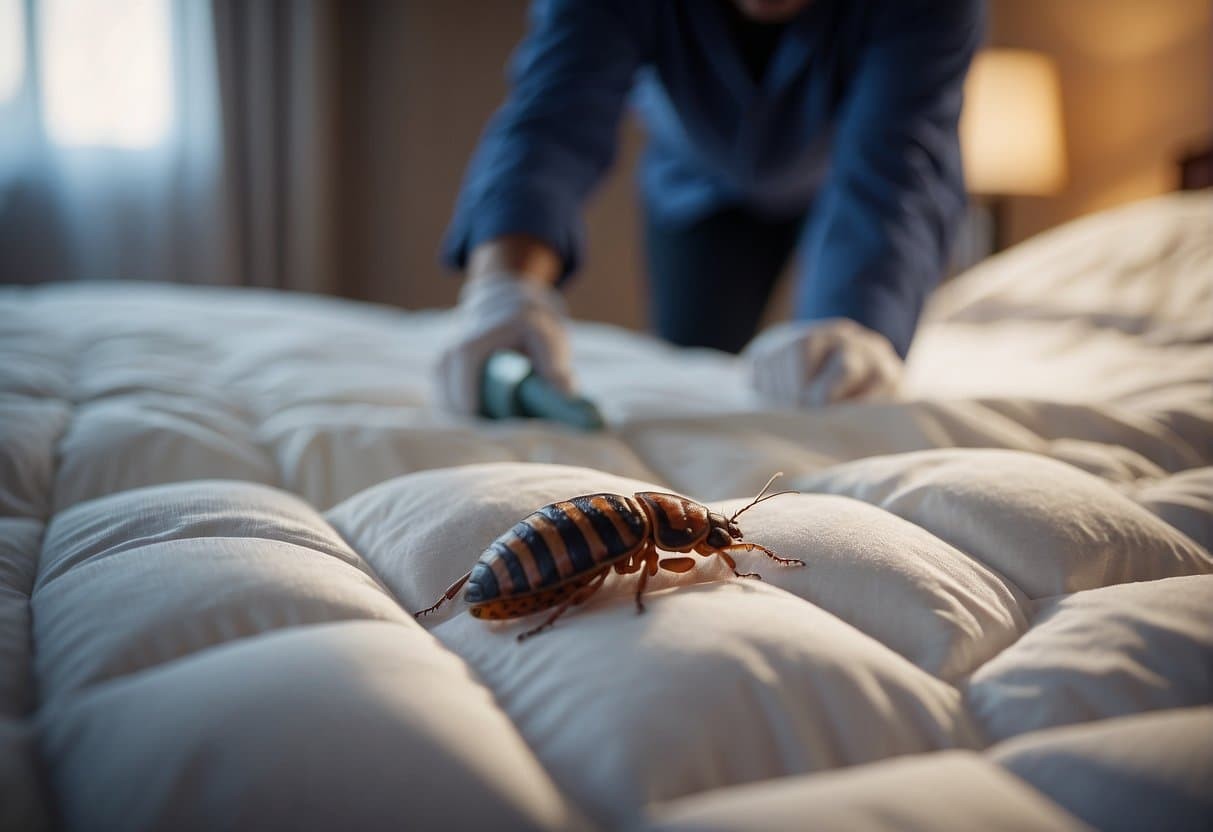
When dealing with the unwelcome presence of bed bugs, it’s not uncommon for homeowners to feel overwhelmed by the sheer persistence of these unwanted guests. Fortunately, professional pest control services can provide a swift and effective solution to eradicate these pesky critters from your living space.
Choosing a Pest Control Company
When tackling a bed bug infestation, it’s essential to partner with a reliable pest control company that can deliver effective results. To ensure you’re getting the best service, look for professionals who possess a proven track record in bed bug elimination and boast licensed, certified technicians skilled in various treatment methods, including heat treatment and chemical applications.
Research their reputation by examining customer reviews, paying close attention to those related specifically to bed bug control. Additionally, confirm that they provide thorough inspection services and discuss post-treatment follow-up protocols to guarantee the infestation is completely eradicated.
It’s also crucial to verify if the company has successfully handled bed bug outbreaks in settings like hotels or apartments, as a reputable track record can significantly impact the success of your treatment.
Professional Treatment Process
When you’ve selected a reputable exterminator, the treatment process typically unfolds in a structured series of steps. The first stage is an inspection, where the company thoroughly examines your property to assess the extent of the infestation and identify any evidence of bed bug bites.
This helps them develop a tailored treatment plan that may incorporate a combination of treatments, such as heat treatments, which are chemical-free and effective, alongside pesticides, based on the severity of the infestation. Next, they implement the plan with precision, targeting specific areas where bed bugs tend to congregate. It’s crucial for professionals to prioritize both safety and efficacy when treating living spaces.
Following treatment, a good company will offer follow-up services to monitor and prevent future outbreaks, especially important if you’re frequently traveling or have recently stayed in an area known to be infested. Remember, professional help is not just a one-off; it’s a strategic partnership designed to safeguard your space from pests. For property owners or landlords, regular check-ins with your pest control partner can save you from the hassle of widespread tenant complaints.
Always verify that the service you choose adheres to the latest bed bug control protocols to ensure a safe and effective solution to your infestation issues.
Special Considerations for Items
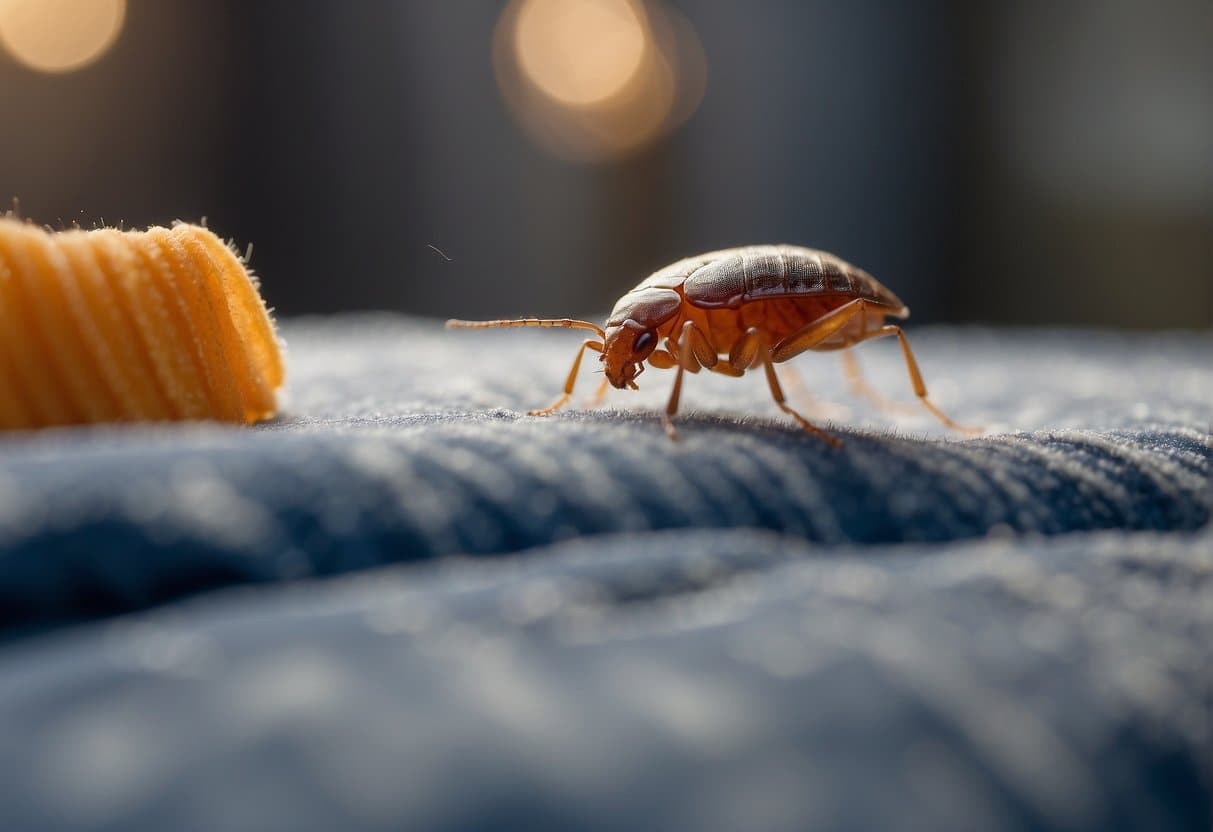
While eradicating bed bugs requires a comprehensive approach, it’s crucial to recognize that not all items can be treated with the same level of aggression. Delicate or sensitive materials such as dry-clean-only clothing, fragile garments, and non-washable items like stuffed animals and handbags demand tailored care to prevent damage while still ensuring the effective elimination of bed bugs. A one-size-fits-all solution is not a viable option when dealing with these types of infestations.
Treating Delicate Items
When it comes to delicate clothing and items that require special care, traditional washing methods often fall short. However, dry cleaning can provide a solution for these sensitive items. The chemical solvent used in the process is not only effective at removing dirt and stains but also has the added benefit of being able to eliminate bed bugs. It’s essential to notify your dry cleaner about the infestation to prevent the potential spread of bed bugs to other customers’ belongings.
For items that cannot withstand exposure to chemicals or heat, freezing can be a viable alternative. By maintaining temperatures below 0°F (-18°C) for at least four days, it’s possible to eliminate bed bugs without using harsh methods. Simply wrap the item in plastic and place it in a freezer until the desired temperature is reached.
Another method for removing bed bugs from delicate items is through vacuuming.
Gently vacuuming the area can help remove the pests, although this method may not be effective against eggs. It’s crucial to seal the vacuum bag and dispose of it properly after use to prevent re-infestation.
Managing Infested Non-Washables
To tackle non-washable items like cherished handbags or plush toys that have fallen victim to bed bug infestations, a methodical approach is crucial. Start by containing the problem by sealing the items in airtight bags to prevent further bed bug spread.
Dry cleaning can be an effective solution for items labeled ‘dry clean only,’ as this process typically eliminates bed bugs. However, it’s essential to consider the potential risks of color bleeding or existing stains.
Discuss these concerns with your dry cleaner to ensure the best possible outcome.
Remember, bed bugs are relentless, but with a combination of meticulous care and targeted treatment strategies, you can recover your infested items and regain peace of mind.
Safe Disposal and Replacement of Infested Items
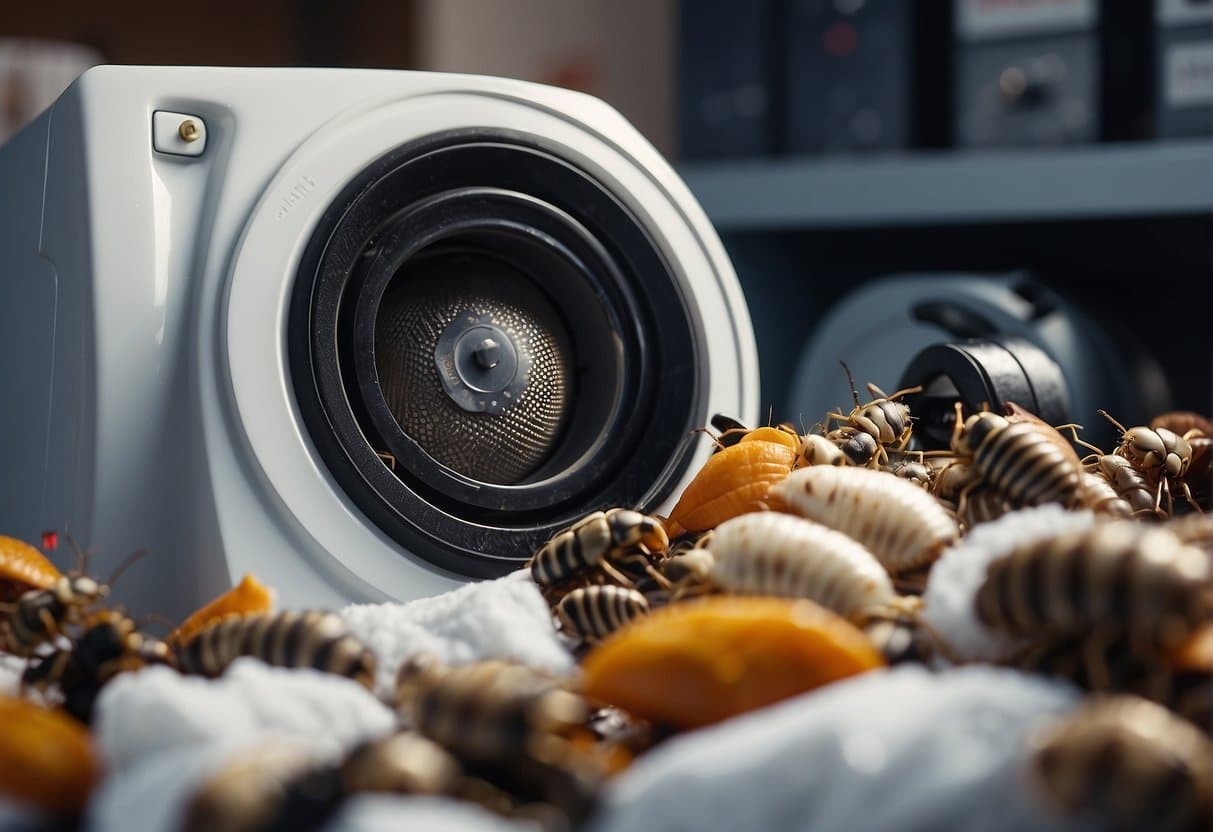
Effective elimination of bed bugs requires a multi-faceted approach, including the disposal of infested items and replacement of affected furniture and bedding. This critical step not only helps to contain the infestation but also prevents the unwanted pests from spreading to other areas of your home.
Proper Disposal Methods
Before you start the process of getting rid of bed bugs, take a moment to double-check all affected areas and belongings for signs of infestation. This is crucial to avoid accidentally spreading the problem to other parts of your home or even taking it with you when moving. When preparing to dispose of infested items, make sure to seal them in plastic bags or containers to prevent bed bugs from escaping.
For larger items like mattresses and furniture that are beyond salvage, use heavy-duty garbage bags to contain the pests. Don’t forget to label these items clearly as ‘infested’ to prevent others from mistakenly picking them up. If you’re a renter, notify your landlord about the infestation and work together to determine the best course of action for disposal. This will not only ensure that the problem is properly addressed but also help you comply with any relevant regulations.
In addition to these steps, it’s essential to coordinate with local waste removal services to understand the proper protocol for disposing of bed bug-infested items. If needed, schedule a pick-up or drop-off to ensure that the pests are properly contained and eliminated.
Replacing Furniture and Bedding
When you’ve finally eliminated the bed bug infestation, it’s time to start thinking about replacing your furniture and bedding. To ensure you don’t invite another unwanted guest into your home, follow these steps. Firstly, opt for bed bug-resistant designs whenever possible – this might mean choosing a mattress or piece of furniture that has been specifically treated to repel bed bugs. Next, protect your new investment by using protective encasements on mattresses and pillows.
This will not only keep the bed bugs at bay but also safeguard against any potential future infestations. Finally, stay vigilant by regularly inspecting new furniture for signs of bed bugs and keeping a record of treatment if possible – this could prove useful when it comes to making a warranty or insurance claim in the event of another outbreak. It’s also important to be mindful of buying second-hand furniture, as it can be a hidden source of bed bugs.
To reduce the risk of introducing new bed bugs into your home, keep your space clean and decluttered – this will remove any potential hiding spots for any unwanted critters that might try to move in.
Frequently Asked Questions
To effectively manage a bed bug infestation, it’s crucial to comprehend the significance of dry cleaning in treating affected textiles. To provide clarity on this topic, we’ve compiled a list of frequently asked questions and their corresponding answers that address the best course of action for handling bed bug-contaminated garments.
Can bed bugs survive a typical dry cleaning process?
Bed bug eradication often relies on the lethal combination of heat and chemical solvents employed in traditional dry cleaning methods. A temperature range of 104 to 122 degrees Fahrenheit proves fatal for all bed bug life stages when exposure exceeds 30 minutes. Consequently, a standard dry cleaning process should efficiently eliminate bed bugs.
Is it effective to use bed bug sprays on clothing before dry cleaning?
While direct application of bed bug sprays onto clothing is generally not advised, as it may not prove effective in eliminating the infestation and could potentially compromise the fabric’s integrity. Instead, a single treatment through dry cleaning, which utilizes high temperatures and solvents, is often sufficient to eradicate bed bugs, rendering additional sprays unnecessary.
What steps should be taken with dry clean only clothes that may be infested with bed bugs?
When dealing with clothing bearing the ‘dry clean only’ label, it’s crucial to handle the situation with care. To ensure the garments receive proper attention, place them in a sealed plastic bag and seek assistance from a professional dry cleaner. Be sure to inform them about the infestation, so they can take necessary precautions and employ suitable treatment methods for your items.
Are bed bug eggs eliminated during the dry cleaning procedure?
While it’s crucial to eliminate every last egg during the dry cleaning process, one hurdle is that eggs can be remarkably resilient to high temperatures. Nevertheless, the synergy of heat and solvents usually proves effective in killing off the majority of bed bugs and their eggs.
Is it necessary to launder all clothing in a household when bed bugs are present?
In reality, it’s not necessary to wash every item of clothing, but taking this step can significantly reduce the likelihood of spreading the infestation. By opting for dry cleaning or washing your garments in water at the right temperatures, you’re effectively tackling any items that may be hosting these unwanted critters.
Can the heat from a laundromat dryer be enough to exterminate bed bugs?
The efficacy of heat as a bed bug extermination method has been well-documented. A simple yet effective approach involves using a laundromat dryer to dry clothing for at least half an hour at high temperatures, typically ranging from 40 to 49 degrees Celsius (or 104 to 122 Fahrenheit), rendering the bed bugs inactive and ultimately eliminating them.
References:
The scientific community has explored various methods for controlling bed bugs, including the use of carbon dioxide fumigation. A study by Wang, Lü, and Xu (2012) published in the Journal of Medical Entomology found that CO2 fumigation was effective in controlling these pests. Additionally, the US Environmental Protection Agency (EPA) has implemented risk management strategies for perchloroethylene (PCE), a chemical commonly used in dry cleaning processes.
According to the EPA’s guidelines, published on July 20, 2023, their approach aims to assess and manage the risks associated with PCE under the Toxic Substances Control Act.






